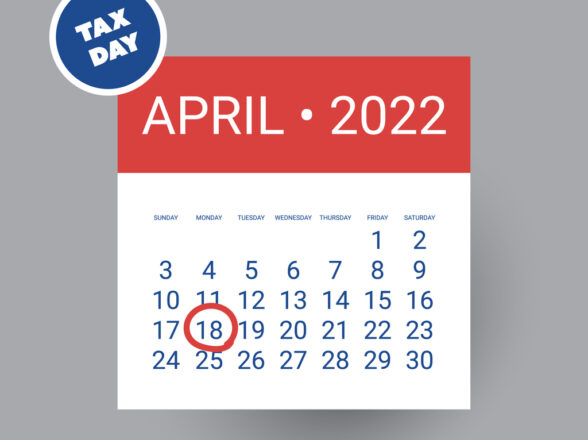Blog
I Just Changed Jobs – What are my Employer Healthcare Options?

When changing jobs, one of the most important considerations in the benefits package is the healthcare options available to you and your family. As comprehensive financial advisors, we get a lot of questions on how to make the best choice when needing to select a new plan. Every decision matters is a mantra we subscribe to not just in the world of investments, but in all aspects of your financial picture. So let’s dig into the details and give you insight that we hope will help to optimize your outcomes.
Employer healthcare plans became popular during World War II as the government sought to restrain employers from inflating wages as employers and jobs competed against each other for the scarce employees at the time. The employers fell back on offering lavish health insurance packages to attract and retain talent.
Decades later, health insurance is still a great means for attracting employees and is highly sought after by job candidates. But not all employers are required to offer healthcare insurance by the law. Whether you work for a large business or a small one, health insurance makes you happier and more productive according to research.
Types of Employer Healthcare Plans
Healthcare in the US is the most expensive in the world. It would be exorbitantly expensive for you to pay for healthcare without a healthcare plan. Here are the 5 types of employer health plans that cover 180 million Americans today.
1. Health Maintenance Organizations
HMOs offer a variety of healthcare services through a network of providers -healthcare facilities, doctors, etc. -who accept to give their services to members.
Ideally, the HMO law requires you to choose a primary care provider (PCP) from this network. Your PCP also works as a guide for getting the care you need and gives you referrals when you need to see other specialists within the network.
HMOs are more affordable than other employer health plans. This is because most HMOs pay providers on a capitation basis. HMOs agree to pay providers a set amount for each member per month under a capitated payment arrangement. This puts providers at a financial risk for member care among the providers on the network ,which encourages care coordination among them. As a result, HMOs are able to afford lower pricing than other plans.
You can choose to have an HMO plan under a copayment plan, deductible or coinsurance. HMOs pay for out of network care during emergencies, when the kind of care you need is not available on the network or when you’re already seeing a specialist who is out of the network.
2. Exclusive Provider Organizations (EPOs)
EPOs are less popular than HMOs but they also deal with networks-which are larger than HMO networks. You may or may not need to be referred by your PCP under an EPO but you’ll spend more than you would on an HMO.
There are a few exceptions to getting healthcare services outside the network in your EPO just like an HMO. First, your EPO can still pay for your out-of-network care if the EPO cannot provide the kind of service you require. However, the EPO requires you to notify them first.
Secondly, you may have just joined an EPO but you’re in the process of receiving special care from a provider who is not part of the network.
Thirdly, if you require emergency attention from a stroke, cardiac arrest or other issues that demand emergency medical attention. The Affordable Care Act demands that health plans should take care of emergency medical issues offered at the nearest out of network health facilities. However, they may transfer you to an in-network service provider when you need further admission.
3. Preferred Provider Organizations (PPOs)
PPOs get their name from working with an expansive network of health facilities and healthcare providers they prefer over others. However, they still cover for medical expenses incurred outside the preferred network. Their most notably distinctive factor is the looser restrictions for services within the network.
However, you’ll pay much higher premiums than you would with HMOs or EPOs. The PPO caters to your out-of-network care by charging you more on deductibles, copays, and coinsurance.
You don’t need a referral from your PCP under this plan. PPOs work through cost-sharing just like HMOs. Anytime you receive care, you pay part of the cost in form of a deductible, coinsurance, and copayment.
4. Point of Service Plan (POS)
Point-of-service plans combine the benefits of both HMO and PPO plans. Like an HMO, the network of care providers is smaller than that of a PPO plan, but a POS costs less for in-network care. POS plans also require you to choose a PCP from the network.
If you need to see a specialist, you must obtain a referral from your PCP but you get to choose a specialist from within or outside the network. You pay more when you choose out-of-network specialists. You’ll be liable for filing the claims involved too when you seek out-of-network services.
5. High Deductible Health Plan (HDHP)
A plan with a higher deductible than a traditional insurance plan. The monthly premium is usually lower, but you pay more health care costs yourself before the insurance company starts to pay its share (your deductible). A high deductible plan (HDHP) can be combined with a health savings account (HSA), allowing you to pay for certain medical expenses with money free from federal taxes.
For 2021, the IRS defines a high deductible health plan as any plan with a deductible of at least $1,400 for an individual or $2,800 for a family. An HDHP’s total yearly out-of-pocket expenses (including deductibles, copayments, and coinsurance) can’t be more than $7,000 for an individual or $14,000 for a family. (This limit doesn’t apply to out-of-network services.)
The Consolidated Omnibus Budget Reconciliation Act (COBRA)
According to a Kaiser Family Foundation study, as of May 2020, almost 27 million Americans had lost their employer-funded health coverage as the economic effects of the pandemic began to bite.
Luckily, the federal government protects employees in these kinds of scenarios through the Consolidated Omnibus Budget Reconciliation Act (COBRA).
It is constituted under federal law as a time-bound health insurance program that allows qualified employees and their dependents to continue enjoying the benefits of health insurance coverage when a worker loses their job or gets reduced work hours. Employers with 20 or more permanent employees are required by the law to offer COBRA. This means that you do not qualify unless you work for a company with at least 20 employees. However, COBRA only works for a temporary period of 18 to 36 months depending on the circumstances. Additionally, you have to pay for the premiums yourself. Under ARPA 2021, the government will settle COBRA insurance payments for people who lost their jobs directly due to COVID-19 from April 1 to September 30. COBRA covers healthcare plans, medical spending accounts, dental plans, vision plans, hearing plans, prescription drug plans, alcohol and substance abuse plans, and mental health plans. As an employer, you have 30 days to inform the plan administrator or insurance company when a job loss occurs save for divorce and status change by a dependent. In case of divorce or change of status by a dependent, you have 60 days to inform your insurer.
Don’t Go It Alone – Find a Partner
One of the more important decisions we all need to make when changing jobs is to select a new healthcare plan. The team at Infinium is here to help you make better, more informed decisions in this area and more. Contact us anytime for a one-on-one consultation to see if we can help you better optimize your outcomes.





























































































